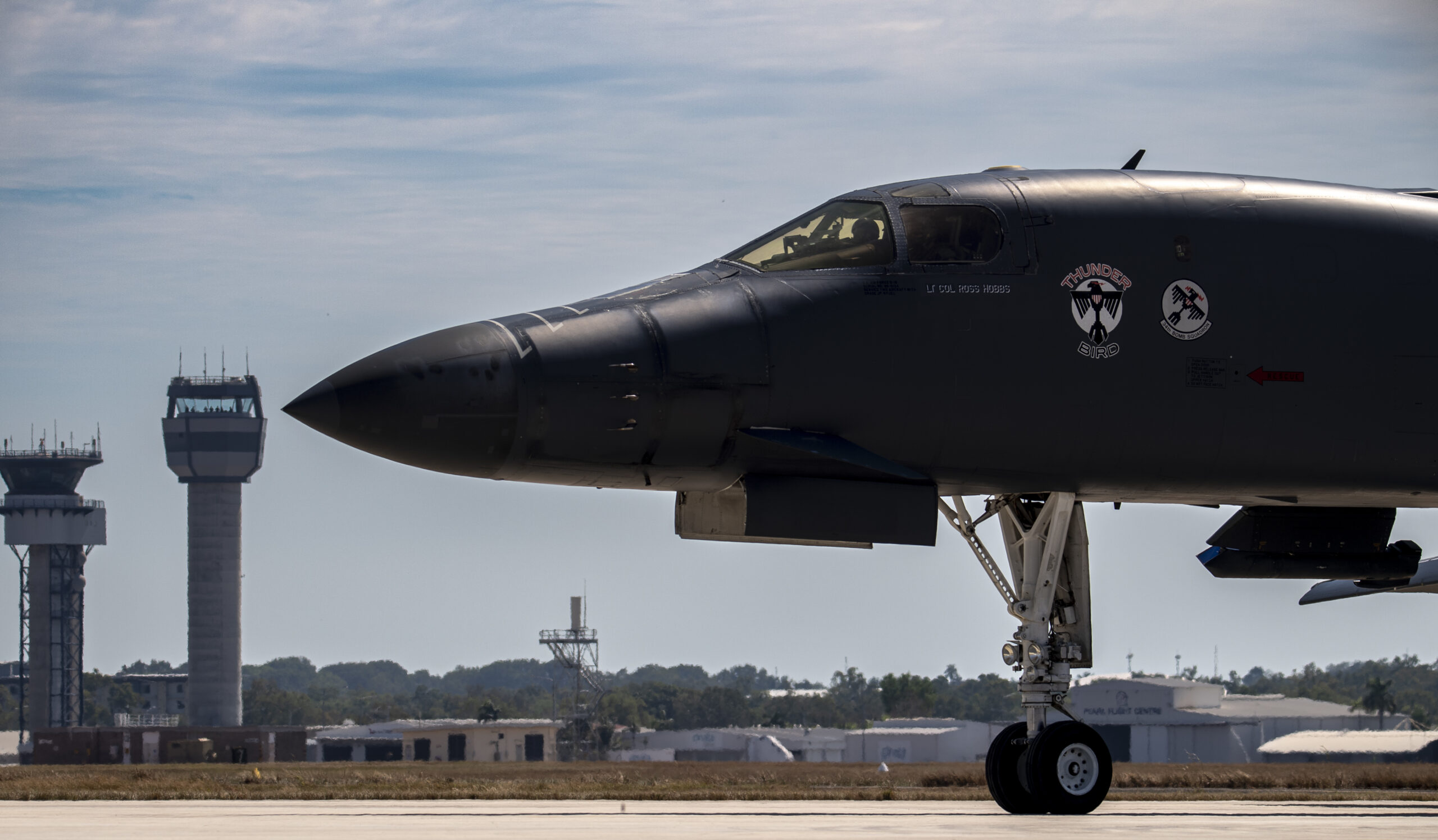

Four crew members of an Air Force B-1B supersonic bomber safely ejected before their aircraft crashed Thursday during an attempt to land at Ellsworth Air Force Base in South Dakota.
The bomber was assigned to the 28th Bomb Wing at Ellsworth, which is one of the Air Force’s two B-1B bases. The bomber crashed at approximately 5:50 p.m. while the crew was trying to land during a training exercise, Air Force officials said. Three of the crewmembers were treated for minor injuries and released. One airman is at a local hospital being treated for non-life-threatening injuries. officials said.
A board of officers will investigate the accident.
Regardless of the cause, the crash puts a spotlight on the bomber’s ejection seats, which appear to have worked as designed in the crash. That hasn’t always been the case. Ejection seats are common in smaller fighter aircraft, but those in the larger B-1B have seen some successful seat ejections and some failures leading to fatal and near-fatal accidents in the past.
The B-1 flies with a four-person crew of a pilot, copilot, and two weapons officers, and is the largest plane flown by the Air Force with ejection seats. All four crew members sit in an Advanced Concept Ejection Seat, or ACES II seat, with an escape hatch above.
In 2018, a B-1B’s seats failed to fire when the crew tried to eject during an engine fire. When one crew member’s ejection seat did not “fire” — meaning the rocket that shoots it from the plane did not ignite — the aircraft commander canceled the ejection for the rest of the crew. The plane was able to make an emergency landing. An Air Force investigation found a non-functional, likely aging part had prevented the seat from following the ejection sequence.
The failed ejection led to an Air Force-wide grounding of B-1s until all seats were checked and cleared to fly.
In a fatal 1987 accident, six crew members were aboard a B-1B for a training flight, with two in non-ejection seats. When the plane suffered an emergency, three of the ejection seats fired correctly but one did not, leaving a flier trapped onboard with the two other crew members. Though the B-1B has a last-ditch escape hatch in the cockpit’s floor, none of the three escaped before the plane crashed.
There are currently 6,000 ACES II seats in service, including in the Air Force’s A-10, F-15, F-16, F-22, B-1B and B-2 fleets. The ACES technology was designed by Collins Aerospace, a subsidiary of the RTX Corporation (formerly known as Raytheon Technologies).
It’s a “fairly advanced seat even though it’s 50 years old now,” with some upgrades over the years, said Kevin Coyne who runs the Ejection Site history project and is a member of the SAFE Association, an organization of transportation safety experts.
The seat was introduced in 1978 and has saved 703 lives, according to RTX. “Unlike other seats, ACES has an ejection spinal injury rate of less than 1 percent,” a company spokesperson told Task & Purpose.
Subscribe to Task & Purpose today. Get the latest military news and culture in your inbox daily.
The B-1B’s ejection system can fire in several different ways and can be activated by any crewmember to eject the entire crew. All four crew can be ejected automatically in less than two seconds, though the system has the option to select a manual mode, in which each flier ejects themselves. Both options are sequenced to provide delays between crew ejections to prevent collisions, according to Collins Aerospace.
When a crewmember pulls the ejection handle, the hatches above the crew are blown clear, and then rockets in the seats fire, Coyne said.
As the crewmember comes out into the airflow, the seats determine which of three parachute modes to use, a Collins official told Task & Purpose.
Mode 1 is for between zero and 250 knots (roughly 288 miles per hour) flying at low altitudes, including takeoffs and landings. Because the bomber is closer to the ground, the seat’s parachute deploys immediately as it leaves the cockpit so that it can inflate before the crew member hits the ground.
If the B-1B is flying above 250 knots, the seat activates mode 2, in which a drogue parachute will stabilize the seat before opening the main parachute.
Mode 3 is for high-altitude ejections, where the air is dangerously thin. In mode 3, the seat immediately deploys the drogue parachute to stabilize the seat as it falls but does not deploy the main parachute until an altitude of 15,000 feet, low enough that the crewmember will be able to breathe.
An early version of the bomber dubbed the B-1A, was originally equipped with a crew escape module that encompassed the entire cockpit area and “was roughly the size of a mini-van,” according to Coyne.
Developed in the 1970s, the B-1 program was canceled in 1977 by President Jimmy Carter but reinstated by President Ronald Reagan. Reagan approved the construction of 100 B-1Bs as part of a defense buildup.
When the program was restarted, the Air Force scrapped the crew escape module in favor of ejection seats due to weight and cost, Coyne said.
The latest on Task & Purpose
- Air Force fires commander of Wright-Patterson Air Force Base
- San Diego vs Parris Island: Who has the toughest Marine boot camp?
- How the military celebrates the New Year, according to combat veterans
- Why won’t the Army won’t let Santa fly on its helicopters: An investigation
- How World War I soldiers gave America the wristwatch